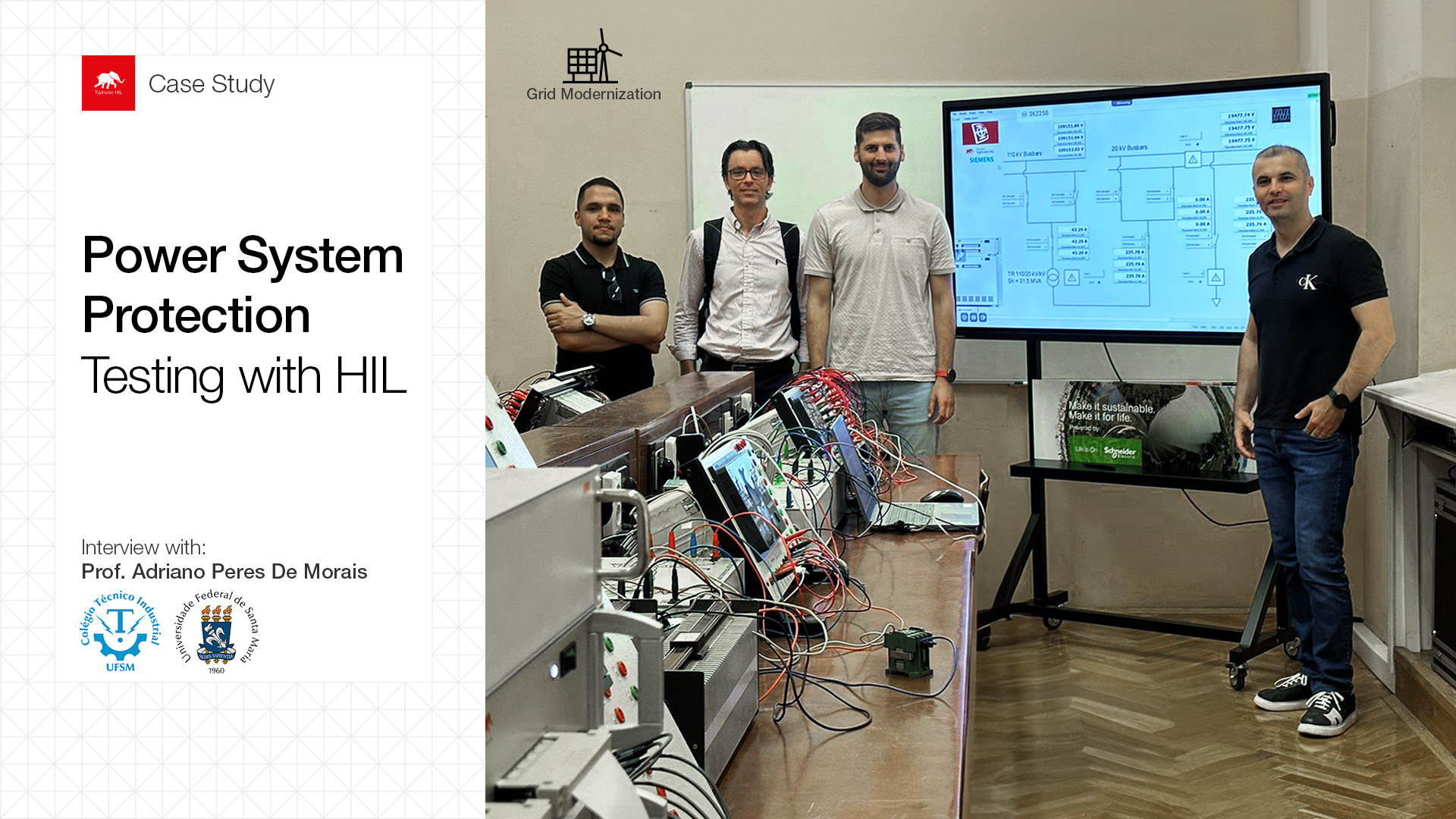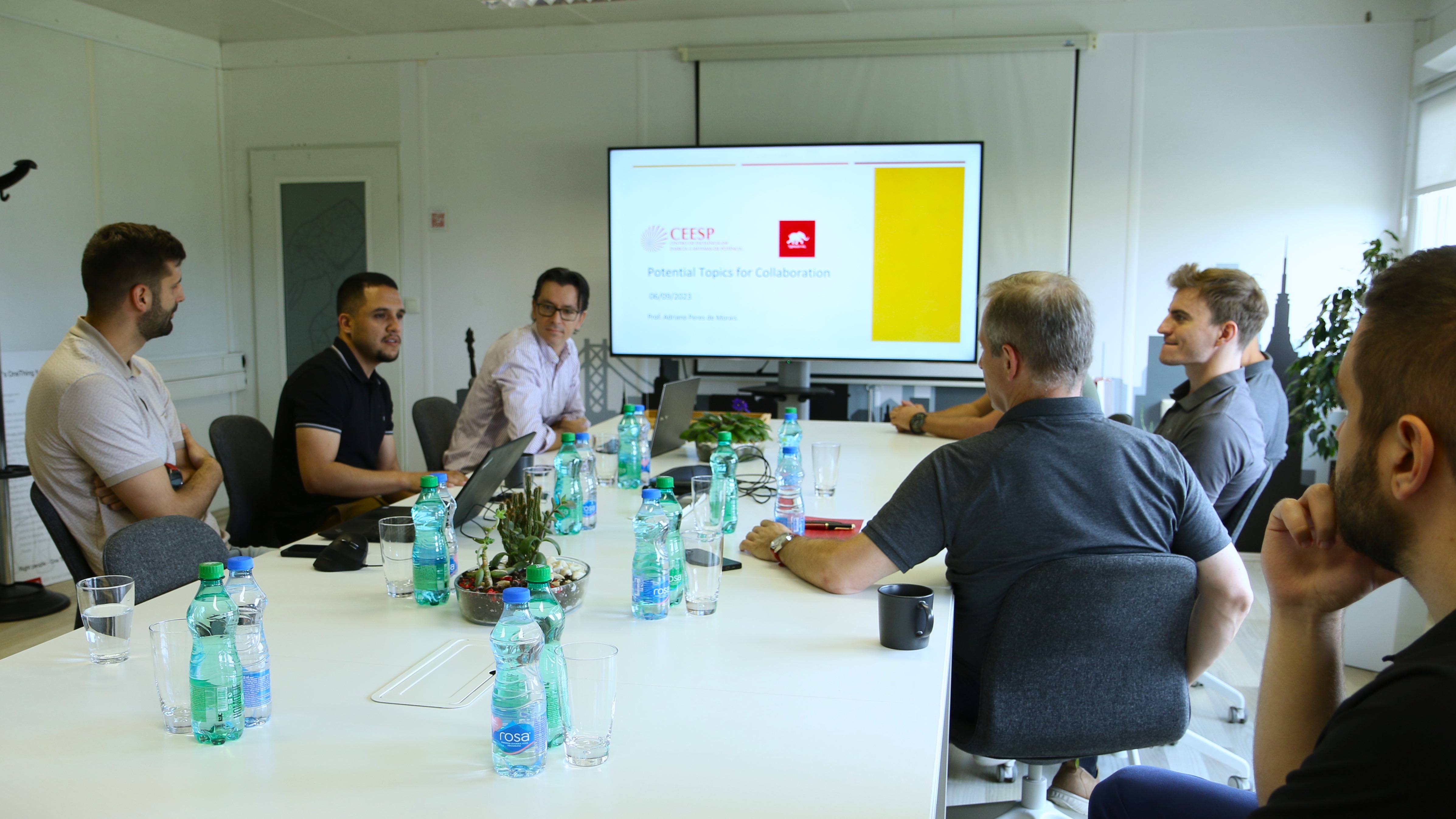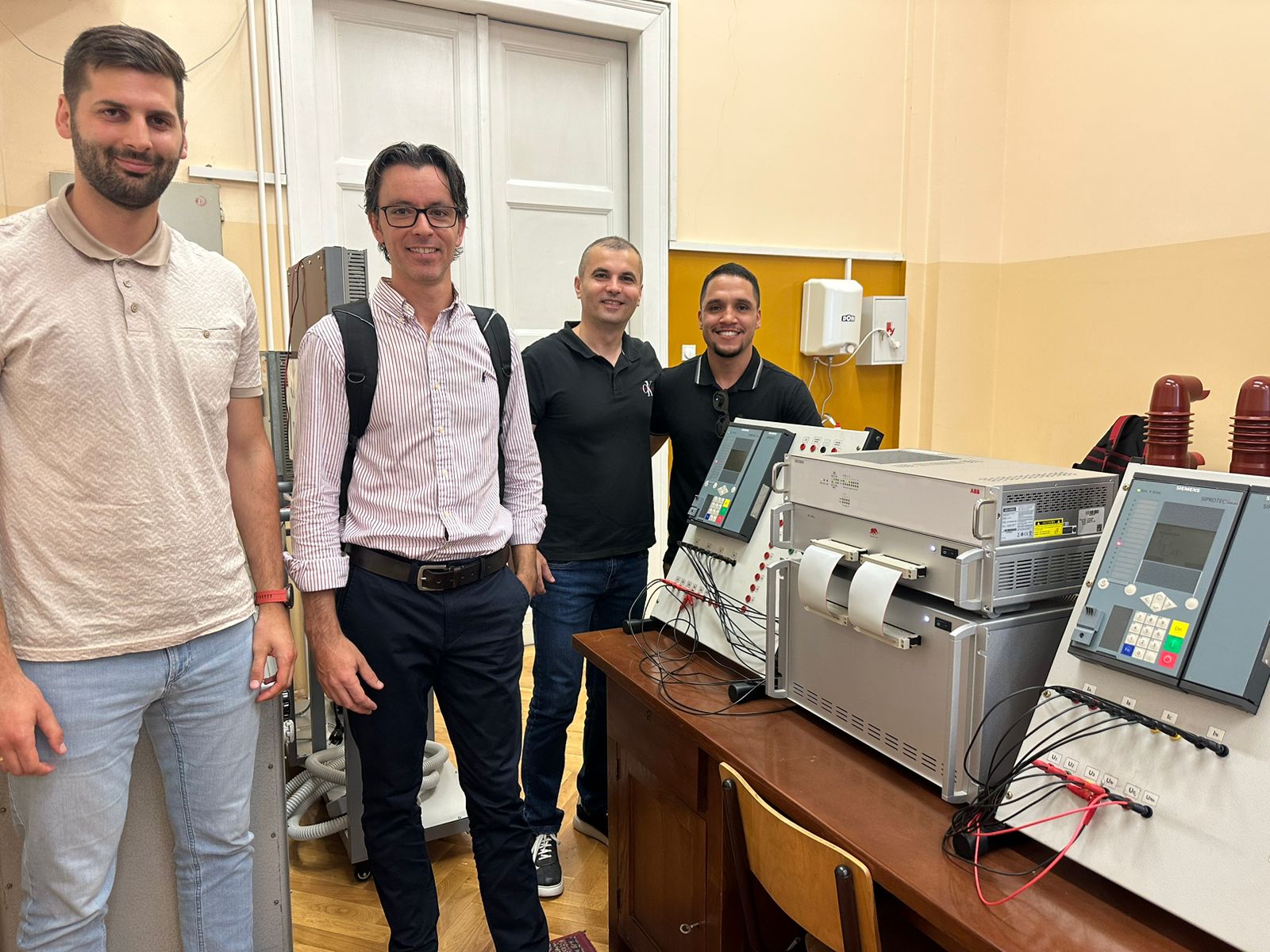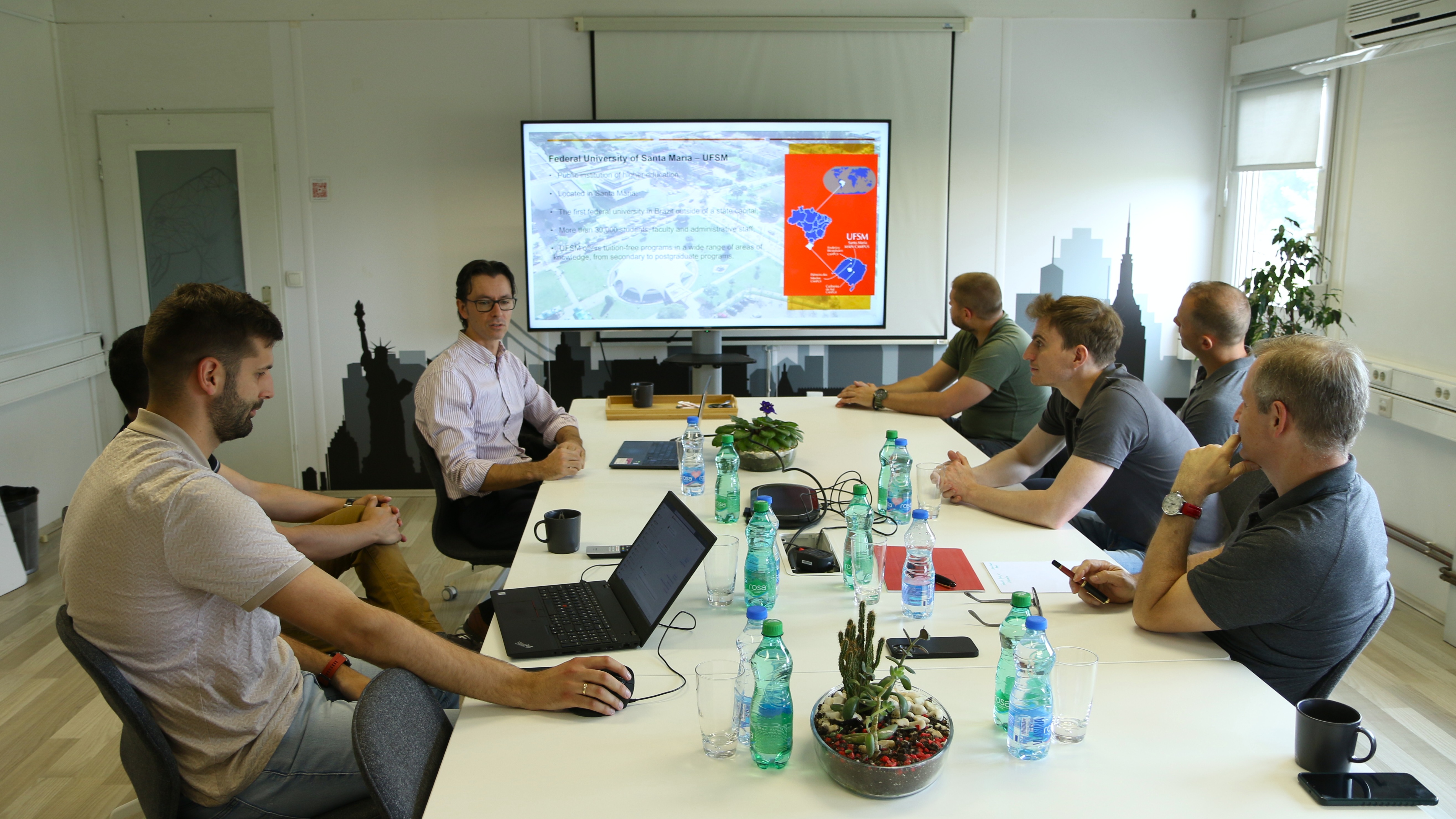
This blog article delves into the world of power system protection testing using Hardware-in-the-Loop (HIL) simulation, as presented by Prof. Adriano Peres de Morais from the Federal University of Santa Maria (UFSM) in Brazil. Prof. Adriano, a leading researcher in power system protection and an advocate for HIL technology, shares his insights and experiences using Typhoon HIL in his research and teaching activities.
Introduction | Power System Protection Research at UFSM
We had the honor to interview Prof. Adriano Peres de Morais, a Full Professor in the Graduate Program in Electrical Engineering (PPGEE) at the Santa Maria Technical and Industrial School (CTISM) of the Federal University of Santa Maria (UFSM). In the video, he introduces UFSM's Center for Electric Power Studies (CESPE), a renowned research group focusing on power system protection, analysis, and the impact of artificial intelligence on the grid. Prof. De Morais highlights his role as the coordinator of the Real-Time Digital Laboratory, where research activities encompass various aspects of power systems, including:
- Power system protection | Developing and testing advanced protection schemes for real-world applications.
- Power system analysis | Studying the behavior of power systems under various operating conditions and disturbances.
- Artificial intelligence in the grid | Exploring the potential of AI for grid monitoring, fault detection, and predictive maintenance.
- Digital superstations and renewable energies | Integrating new technologies like digital relays and renewable energy sources into the power grid.

A photo from Prof. Adriano’s research presentation at the Typhoon HIL Research and Development Center in Novi Sad.
HIL in Research | The Value of C-HIL Testing
The CESPE lab hosts an impressive HIL setup that includes three Typhoon HIL604 and two HIL402 hardware devices that provide real-time simulation capabilities for complex power system models. The setup integrates various relays and Multiple Intelligent Electronic Devices (IEDs) from different manufacturers, catering to diverse protection applications, as well as Merging Units, Ethernet Switches, and GPS. These additional components enable seamless data exchange and synchronization within the HIL environment.
Prof. Adriano highlights the significance of HIL in accelerating the transition towards digital substations. In his view, HIL simulation allows for three key things for power system protection research, namely:
- Extensive testing of merging units | Merging units play a crucial role in digital substations, and HIL enables thorough testing of their functionality and impact on the grid.
- Vendor-neutral testing | The multi-vendor IED setup in UFSM's lab facilitates testing and evaluation of protection schemes across different manufacturers' equipment, providing comprehensive data on the performance of a wide variety of devices.
- Reduced risk and cost during real-world integration | By identifying and resolving potential issues in the simulated environment, HIL helps minimize risks and costs associated with deploying new protection schemes in real physical substations.

The visit of the digital substation set up at the University of Belgrade, featuring from left to right: Simisa Simic, applications engineer at Typhoon HIL, Prof. Adriano Peres de Morais, professor at CTISM, UFSM, Prof. Zoran Stojanovic from the University of Belgrade, and Caio Osorio, applications engineer at Typhoon HIL.
HIL in Teaching | Empowering Future Engineers
Prof. Adriano emphasizes the invaluable role of HIL in his power system protection course for AC generators. He explains how HIL provides graduating students with exposure to cutting-edge technology so they will gain practical experience with HIL tools that will prepare them to tackle the demands of the modern power industry. HIL methodology also allows for unique real-world device interaction in a safe simulated environment for care-free beginner-friendly testing and learning.
HIL setups can incorporate digital twins of actual relays and other devices, mimicking real-world scenarios and enhancing learning outcomes. Ultimately, this leads to an improved understanding of protection principles: by simulating various grid conditions and faults, HIL helps students visualize and comprehend the behavior of protection schemes. A hands-on learning approach like this allows for a deeper understanding of key principles that they will later apply in their engineering work or research.

A snapshot from Prof. Adriano’s presentation of the research and teaching facilities at UFSM delivered at the Typhoon HIL Research and Development Center in Novi Sad.
Collaboration | An Industry-Academia Partnership for Power System Protection Research and Innovation
This video interview chronicles UFSM's five-year collaboration with Typhoon HIL, a leading provider of HIL simulation solutions for power systems. This partnership blossomed from initial conference collaborations to the development of joint projects. UFSM researchers made important power systems community contributions by incorporating their new protection algorithms into Typhoon HIL's Control Center software, enabling testing and refinement in a simulated environment. His team also recognized the importance of hands-on experience and created freely accessible HIL-based training courses. UFSM researchers and Typhoon HIL engineers collaborated to develop HIL Academy courses that utilize HIL technology for power system protection education to empower young engineers on their learning and career development journey.
We hope that this blog provides you with a glimpse into the world of power system protection testing using HIL simulation. It highlights the fruitful collaboration between UFSM and Typhoon HIL, showcasing how HIL technology is revolutionizing power system education and research. If you are interested in learning more about HIL and its applications in power system protection, be sure to check out the video at the top of this blog article and the resources available in the video description.
Are you exploring adopting HIL in your work?
Are you interested in more stories like this? 
Credits
Text | Debora Santo
Visuals | Karl Mickei
Blog Editor | Debora Santo

